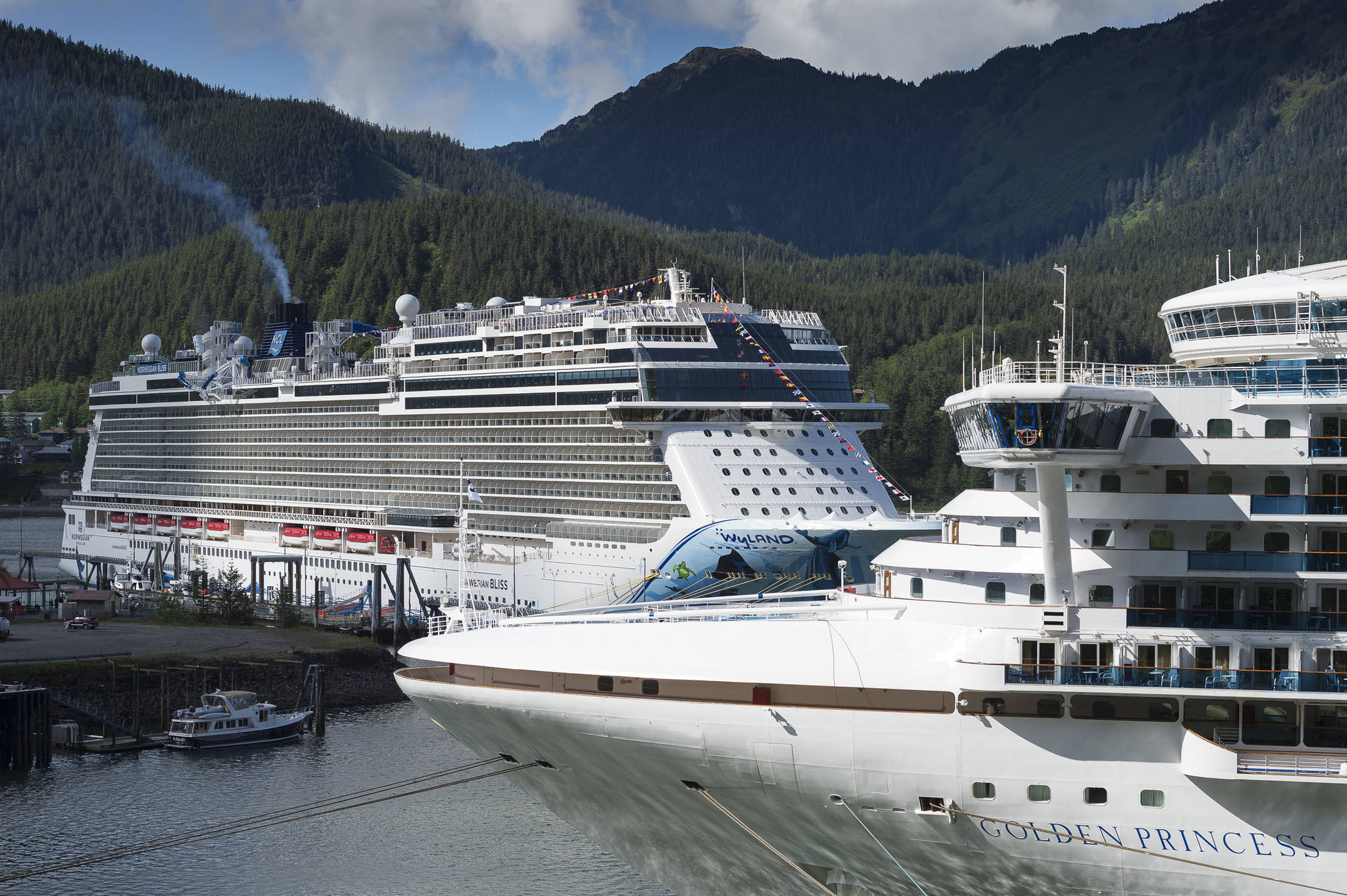More cruise passengers are expected to come to Juneau this year — about 140,000 more.
A total of 1.31 million passengers are expected compared to 1.17 million in 2018 and more than double the 640,000 people who visited in 2000. Those figures comes from Juneau Economic Development Council Indicators Reports based on data from McDowell Group and Cruise Lines International Association.
The numbers were shared at the second day of the Innovation Summit Thursday afternoon at Centennial Hall during a deep dive conversation about Juneau’s tourism capacity.
“It’s a scary conversation because A) it’s emotional and B) people have dollars on the line — their livelihoods on the line,” said Barb Scheinberg, who led the discussion.
[Big ships coming to tiny village]
Rather than determining a specific number of tourists that Juneau could accommodate, the discussion focused on aspects of tourism, its impact on Juneau and what could be done to improve things.
“We’re not looking at tourism capacity or carrying capacity as a set, finite number,” Scheinberg said. “It could be a year from now we end up with something like that. For this afternoon’s session we don’t want to focus on a number. We want to talk about your perspective on Juneau, Southeast Alaska’s, carrying capacity.”
Kirby Day, port manager for Princess and Holland America Group and oversees Juneau Tourism Best Management Practices program who helped facilitate the discussion, said there needs to be a regional push to make tourism better for residents because tourists are an inevitability.
“We have to do better,” Day said. “We’re going to grow 16 percent in this community this year. That’s a big number.”
He said the increased tourist load can be absorbed in a way that will be acceptable to the majority of the community if tourist operators operate in a way that’s conscious of locals.
“We’re in the crosshairs,” Day said. “Find a way to do better. That’s going to be our goal.”
Discussions centered on what better looks like for different facets of Juneau.
Attendees were broken up into two groups and assigned one of several roles and told to think about tourism from the perspective of a downtown resident, downtown business owner, Mendenhall Valley resident or tour operator among other roles.
The general consensus was that tourism brings economic opportunities to Juneau but also creates crowding, which poses challenges.
Pedestrian traffic clogging up city roads in particular was a concern, and a few ideas were floated that could help address it.
Sierra Gadaire, general manager for Gastineau Guiding who helped facilitate the discussion, said she would like to see Franklin Street become strictly for foot traffic and the sea walk become a road for vehicles.
Other attendees said they’d be interested in a traffic count in the busiest sections of downtown in order to help come up with a solution.
The sentiment in the room that change — sometimes drastic change — will be necessary in the future was at odds with figures Scheinberg shared at the start of the meeting based on polling done by the City and Borough of Juneau in 2002 and responses to questions during Blueprint Downtown meetings earlier this year.
[Taking a walk through the future of downtown]
Blueprint Downtown is a long-term planning effort from the CBJ.
In 2002, 32 percent of 1,511 residents polled said Juneau has all the cruise ships that it can handle. This year, of 73 respondents at Blueprint Downtown meetings 34 percent said Juneau has reached its cruise ship limit. In 2002, about 741,500 cruise ship passengers came to Juneau.
Twenty-four percent of respondents this year said Juneau has more cruise ship passengers than it can handle compared to 30 percent of residents polled in 2002.
Thirty-one percent said in 2019 that Juneau could handle a few more cruise ship passengers compared to 25 percent of those polled in 2002.
Eleven percent of responses this year indicated Juneau could handle a substantial increase in cruise ship passengers compared to 13 percent in 2002.
Scheinberg said it’s important to understand the second sample size is much smaller than the first polling group, but it is still interesting that 17 years and more than 500,0000 cruise ship passengers later attitudes regarding tourism are uncannily similar.
She said the disconnect between public polling and the conversations that were had Thursday comes from the people who were at a business summit breakout session focused on tourism capacity.
“Who you have here today are people who make their living in the tourism industry.”
• Contact arts and culture reporter Ben Hohenstatt at (907)523-2243 or bhohenstatt@juneauempire.com. Follow him on Twitter @BenHohenstatt.

